
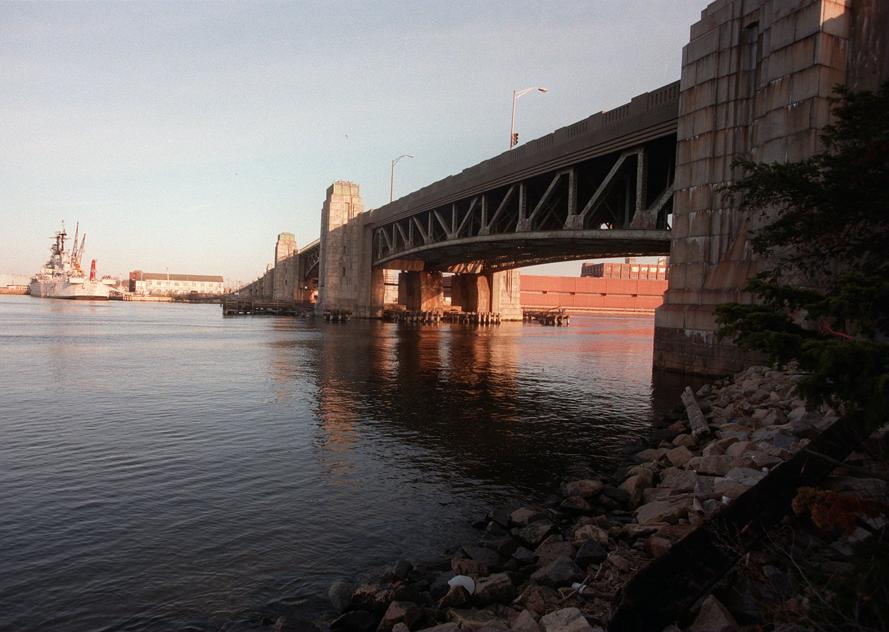
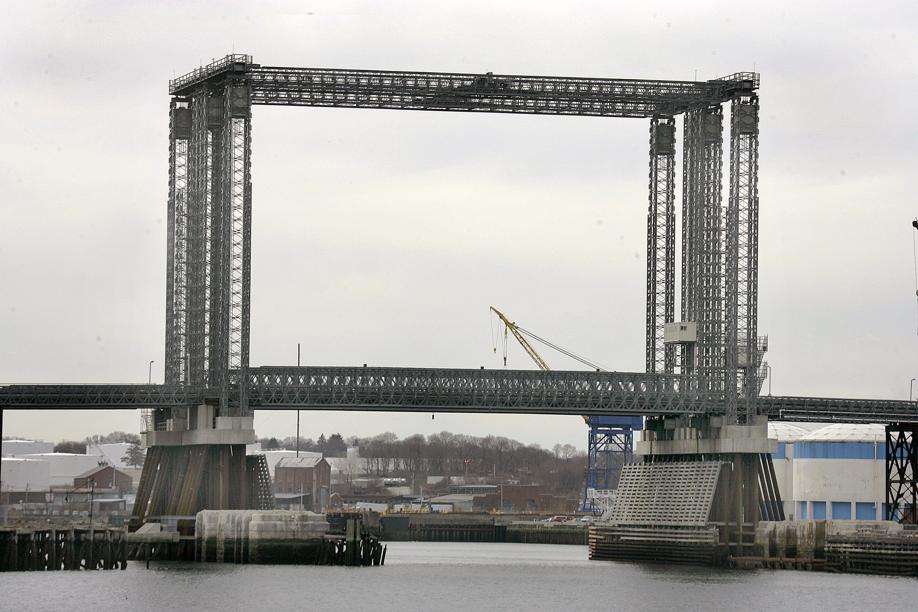
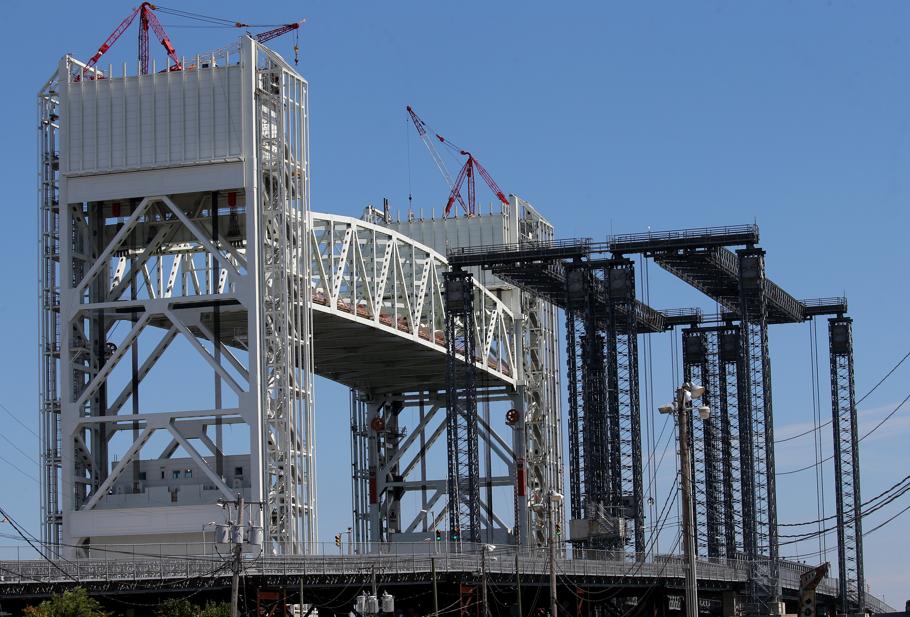
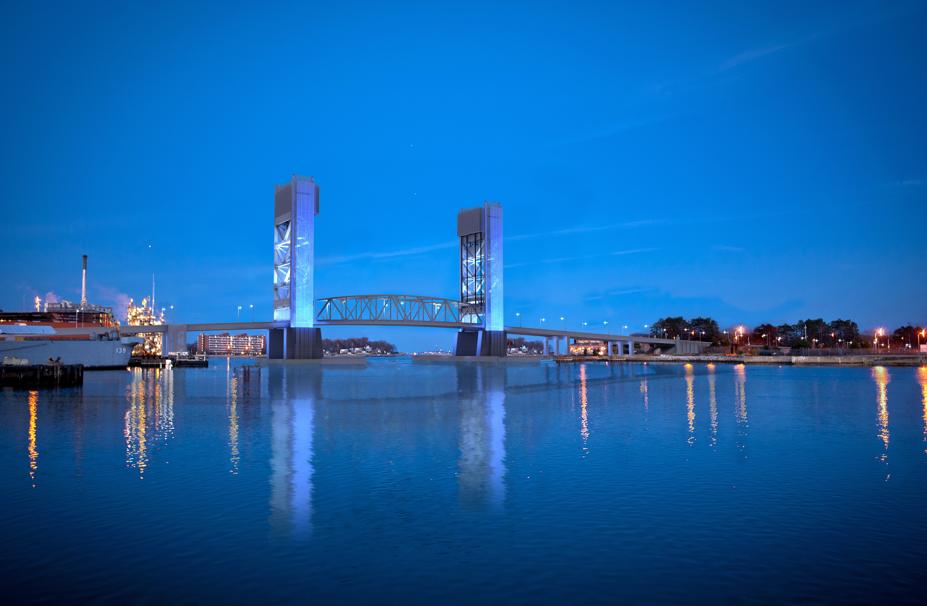
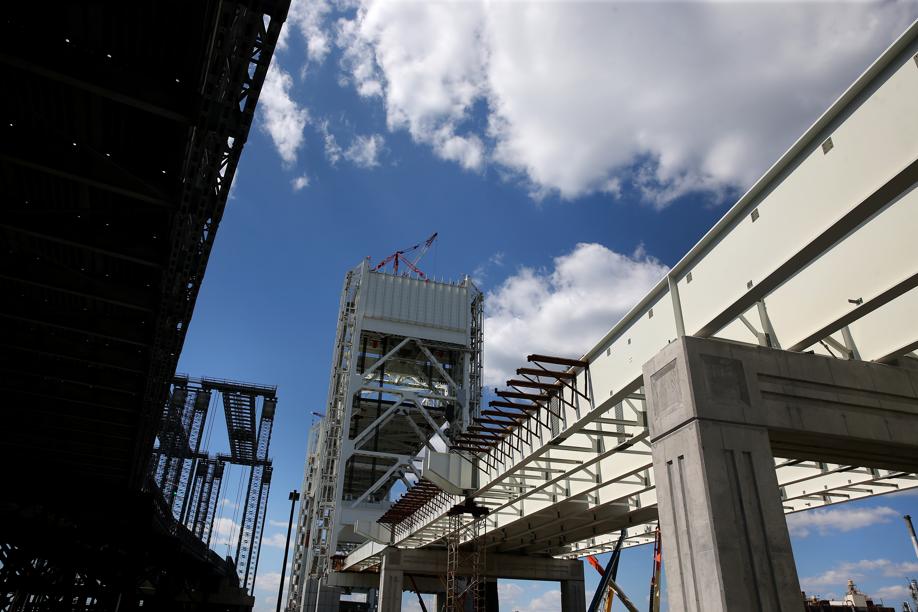
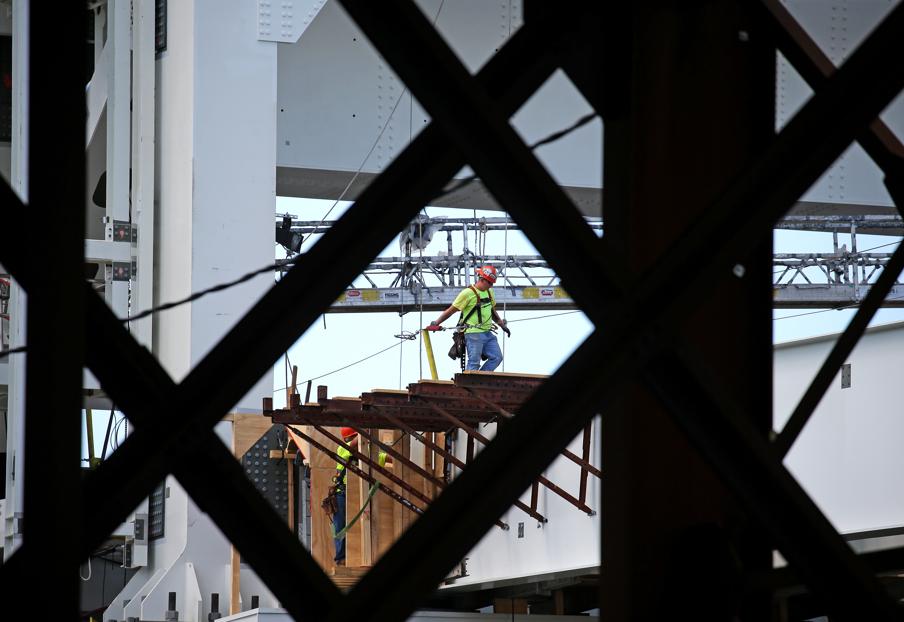
The old Fore River Bridge linking Weymouth and Quincy was a thing of beauty, an art deco masterpiece worthy of a postcard.
The new vertical lift bridge won’t be that, exactly. But it will create fewer traffic tie-ups than the temporary bridge it is replacing, state transportation officials say, and there is relief in sight for bridge neighbors from years of heavy construction noise.
The surest sign of progress on the new bridge was the installation in mid-August of the span that will carry the roadway, but the whole structure won’t be finished until October 2018, according to the state Department of Transportation.
Fond memories of the bascule bridge, which opened in 1936 and was demolished in 2004, linger, but after 14 years with a temporary “Erector set’’ bridge that has been called ugly, loud, and slow, the neighbors are ready for a new one.
“The temporary bridge has been a nightmare,’’ said Gary Peters, who lives in North Weymouth, within walking distance of the construction activity.
In spring and summer, the noises can be a nuisance, he said.
“It’s rattle-rattle.’’
The bridge carries some 32,000 vehicles every weekday over the Fore River at the Quincy-Weymouth border on Route 3A, an important artery to Boston for Weymouth and communities farther south.
Once it is finished, cyclists, pedestrians, motorists, and boaters will have a more pleasant experience navigating the bridge, and shorter wait times. The new bridge will take 2 minutes and 30 seconds to open for ships and tankers, and the same amount of time to close for motorists, half the time it takes now in good weather, according to state transportation officials.
The new bridge will have two lanes for vehicles in each direction, a bicycle lane in each direction, and sidewalks on both sides. It is expected to last 75 years.
Weymouth Mayor Robert L. Hedlund said the temporary bridge shakes when he rides his bike over it, and the bridge’s appearance and attendant traffic delays cause a psychological wound for the community.
But many of its neighbors are now more concerned with a natural gas compressor station proposed nearby, Hedlund said. Spectra Energy, a Texas-based utility, says the station is a critical part of a $1 billion project that would expand its pipeline system to bring in more natural gas to New England. But residents in the dense neighborhood nearby worry about potential gas leaks, pollution, and home values.
Of the bridge’s impact, Hedlund said, “It’s just something that we’re accustomed to.’’
They’ve had plenty of time to get used to it. The temporary bridge opened in 2002, and the new bridge has been under construction since 2013. It’s two years behind schedule, however, because of faulty materials that required the manufacture and delivery of replacements.
The new bridge, estimated to cost $272 million, which includes funds for cost overruns, was paid for with state and federal funds. It won’t have the style of the bascule bridge, but it will require less raising and lowering than the temporary span, because it is higher and will be able to accommodate more boats in its lower position, according to transportation officials.
The new bridge will also be less noisy. The temporary bridge has metal plates that clang when vehicles travel over it, but the new bridge will have an asphalt surface and require less maintenance in cold weather.
While the last few years haven’t been pleasant around the temporary bridge, some neighbors concede it hasn’t been as terrible as first feared.
“It can go up a lot during the day, which causes traffic jams,’’ said Lisa Dean, who owns Fore River Fishing Tackle, located in Quincy on the rotary adjacent to the bridge. “I don’t think it’s as big a deal as everyone else.’’
And when there’s a line of cars waiting for the bridge to be lowered so they can drive across to Weymouth? Dean says the visibility might have even helped her business.
The temporary bridge doesn’t give a feeling of security and is rickety, said Geoff Potter, president of the North Weymouth Civic Association. But the state and bridge contractors have been responsive, he said.
“Probably, emotionally, people say, ‘We don’t want that bridge,’’’ Potter said. “I don’t think it’s been as horrible as everybody thought it was going to be.’’
To go along with the new bridge, some in Weymouth are hoping for beautification efforts to help combat the toll of living for years in the shadow of a construction zone.
The state is planning landscaping in the rotary in Quincy next to the bridge and in areas where the temporary bridge will be removed.
North Weymouth resident John Childs is planning fund-raisers to help make the Route 3A corridor in Weymouth more attractive — and a celebration once the bridge opens, similar to the festivities held when the bascule bridge opened in 1936.
“We want to make it more of an urban oasis instead of a run-down area,’’ Childs said. He has counted at least 12 vacant storefronts along Route 3A from the bridge to the Weymouth-Hingham line, he said.
Business owners said various changes in the market could have contributed to challenges on the 3A corridor, from a consumer shift to online shopping to the growth of big-box retail.
The proprietor of Bridge Antiques in Weymouth, which opened a mile from the bridge in 1975, is hopeful.
Annemarie Kelley, who has been with the business since 1984 and has owned it since 2009, said she knows when the bridge is up by the line of cars heading toward the bridge that stall outside her window.
“It’s just one of those things that you just deal with because you’re here,’’ said Kelley. “I’m hoping the new bridge will be a lot better.’’
Mind
the gap
1902
Year the first bridge opened over the Fore River between Quincy and Weymouth
1936
Year the art deco bascule bridge opened
32,000
Number of vehicles per week day
$272m
Cost of the new bridge, including contingencies
324 ft.
Length of new lift span
78.5 ft.
Width
33.5 ft.
Height at its ends
43.5 ft.
Height at its center
Source: Mass. Department of Transportation
Jill Terreri Ramos can be reached at jill.ramos@globe. com. Follow her on Twitter @jillterreri.


 PREVIOUS ARTICLE
PREVIOUS ARTICLE